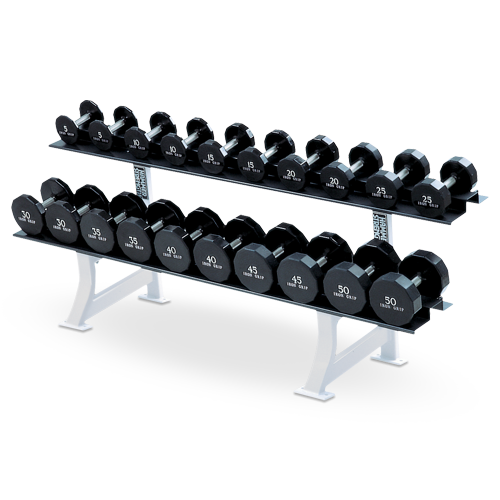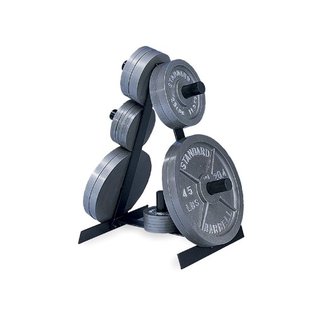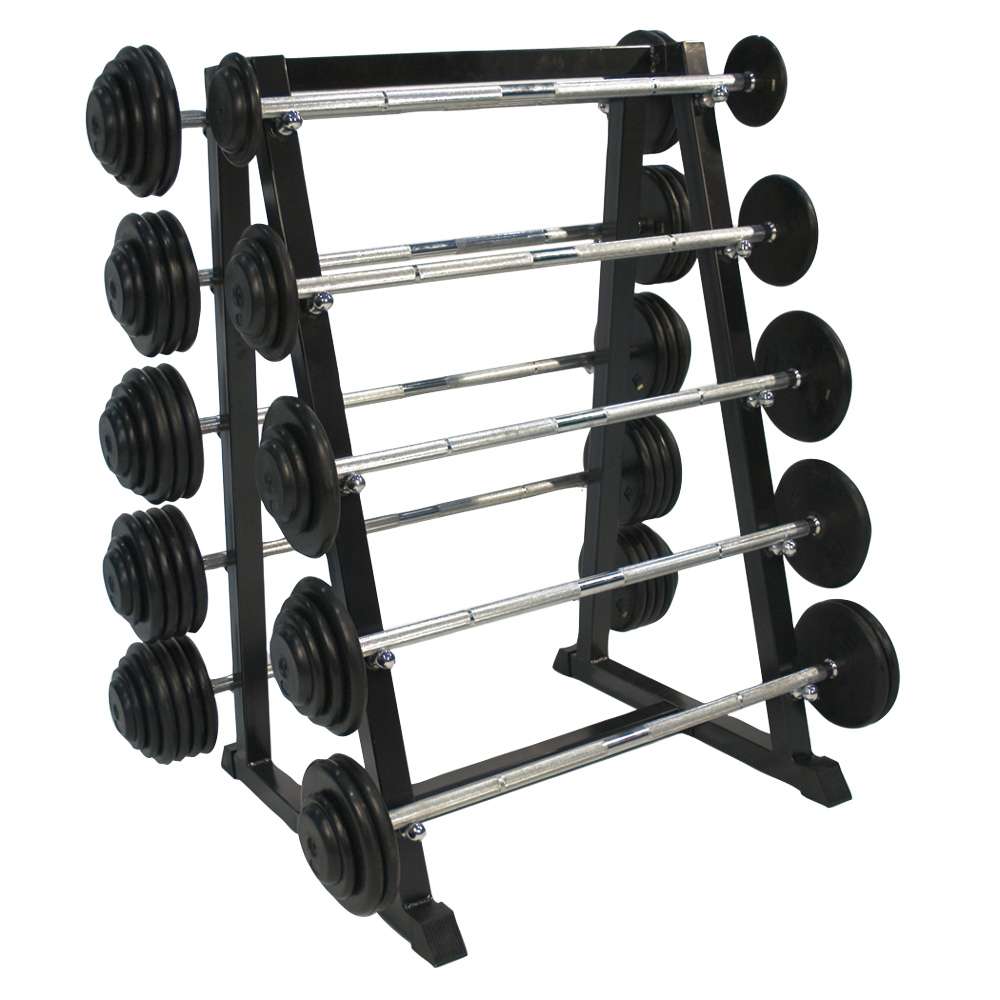Weight racks are critical fixtures in a gym. They're used to store workout equipment, such as dumbbells, plates, and barbells. If you're planning on buying a weight rack, it's important to do some research ahead of time.
Types of weight racks
Just as the name implies, weight racks hold and showcase your weights. You'll find many types in the gym that vary in size -- from short and wide to tall and narrow. While there's an argument for buying a rack to accommodate your height (bending wrong when picking up weights can cause knee, back, and/or joint pain and damage), there are several valid points to be made for almost any design out there. A shorter rack is less likely to tip over. A wide rack requires a more spacious workout environment.
Read on for more information about your weight rack options.
Dumbbell racks

Dumbbell Weight Rack
In workout forums, most gym goers agree that tripping over equipment is a top-five gym mishap. Your foot against a dumbbell will lose every time.
With a sturdy dumbbell rack, you don't have to worry about balancing your weights to prevent the rack from tipping. However, keeping them in order will make it easier to find your equipment quicker.
Dumbbell rack options
There are different types of dumbbell weight racks to choose from:
- One tier
- Two tier
- Mixed rack
- Triangle rack
- Vertical rack
Mixed racks have a dumbbell holder and a plate holder.
Vertical and triangle weight racks tend to cost slightly more than the standard tiers, but offer more versatility. Tiered racks utilize space more efficiently than vertical racks, but neither is better than the other. It comes down to personal preferences at that point.
Plate racks

Plate Weight Racks
As the name suggests, plate weight racks are designed to hold plate weights, which are, by design, more difficult to lift off the floor.
Plate weight racks are strong and study. They're constructed to hold the heaviest of plates. Plate weight racks are triangular in design with branches that plates slide onto. The top of the rack tree holds lighter plates and takes on heavier weights closer to the ground.
You can purchase a plate rack with barbell and dumbbell holder.
Barbell racks

Barbell Weight Rack
Barbell racks also tend to have more stability problems compared to dumbbell and plate holders since the weights must be stacked vertically. By keeping your heaviest barbells at the bottom, you're less likely to cause a tip-over. Barbell racks have also been known to tip when the weights are hastily removed. Be sure to lift your barbell from the rack evenly and with care.
Other weight racks
Olympic vs. standard weight racks
Weight racks also come in two grade levels: olympic and standard. Standard weights are more common in home gyms since they're less expensive, but offer the same workout advantages as olympic weights.
One downside of owning olympic weights is that you must also have olympic-grade racks (more expensive). You have the option of upgrading standard-grade racks, which obviously costs more money.
Unconventional weight racks
These hybrid racks are constructed for multi-tasking and designed to be more pleasing to the eye. You can find tiers, towers, and trees that hold different types of weights in addition to basic gym accessories, such as attachments, handles, and cuffs that would otherwise get stashed on the floor -- making for a potentially treacherous home workout space.
A little touch of neon or a chrome finish are attractive options.
Considerations
Some factors that will influence your weight rack purchase are these:
| Space | If your home weight room is small, you should consider a hybrid, one-rack-fits-all set-up. For a larger room, you can have a separate rack for all your weights. |
| Collection size | Maybe right this moment you have a barbell or two and a few dumbbells. Certainly a hybrid rack is appropriate. But if you're planning to build out your home gym, buy the racks for the weights you plan to own rather than what you currently own. |
| Aesthetics | There's no reason to deny that appearance is a factor in your purchase. If you like your equipment, including your storage devices, you're more likely to use and enjoy your home gym. |
| Financial | While it may be tempting to buy the least expensive weight rack to save a few dollars, be sure to scour buyer reviews thoroughly. Be sure your rack is sturdy and will last more than a year or so. |
| Accessories | Purchasing a hybrid rack that holds your accessories will help keep your home gym safe and neat. |
| Other important considerations | If you have children at home, do not skimp on a sturdy, reliable weight rack. Even a 3 lb. dumbbell can be hazardous in a house with kids. |